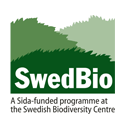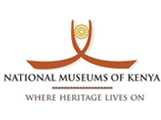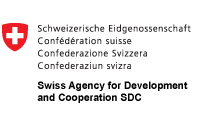Click on images to enlarge
/thumbs/agave_sisalana9_sml.jpg)
the conical spine at the leaf tip (Photo: Sheldon Navie)
/thumbs/agave_sisalana8_sml.jpg)
young plant (Photo: Sheldon Navie)
/thumbs/agave_sisalana8_-_FKS_sml.jpg)
clusters of plantlets on old flowering branches (Photo: Forest and Kim Starr, USGS)
/thumbs/agave_sisalana3_-_LP_sml.jpg)
infestation in bushland (Photo: Land Protection, QDNRW)
/thumbs/agave_sisalana27_sml.jpg)
habit in flower (Photo: Sheldon Navie)
/thumbs/agave_sisalana22_sml.jpg)
the very large, elongated, fleshy, greyish-green leaves (Photo: Sheldon Navie)
/thumbs/agave_sisalana19_sml.jpg)
habit (Photo: Sheldon Navie)
/thumbs/agave_sisalana18_sml.jpg)
dense infestation on a railway cutting (Photo: Sheldon Navie)
/thumbs/agave_sisalana16_sml.jpg)
close-up of plantlets on the old flowering branches (Photo: Sheldon Navie)
/thumbs/agave_sisalana14_sml.jpg)
flower buds (Photo: Sheldon Navie)
/thumbs/agave_sisalana13_sml.jpg)
close-up of upright flowers (Photo: Sheldon Navie)
/thumbs/agave_sisalana10_sml.jpg)
close-up of the leaf showing the lack of prickles on its margins (Photo: Sheldon Navie)
Scientific name
Agave sisalana Perrine
Synonyms
Agave sisalana Perrine ex Engelm. (Unresolved) ; Agave sisalana var. armata Trel. (Synonym); Agave sisalana f. armata (Trel.) Trel. (Synonym)
Common names
Sisal, agave, century plant, hemp plant, mescal, sisal agave, sisal hemp
Family
Agavaceae
Origin
This species is only known from cultivation, but it is native to Central America (Mexico).
Naturalised distribution (global)
Locations in which Agave sisalana is naturalised include parts of Africa, Madagascar, the Caribbean, USA (Florida) and on some Pacific islands.
Introduced, naturalised or invasive in East Africa
Agave sisalana is invasive in parts of Kenya (A.B.R. Witt pers. obs.) and Tanzania (Henderson 2002) and naturalised in Uganda (A.B.R. Witt Pers. obs.). Bulbils (shoots) of A. sisalana are thought to have been exported from Mexico to East Africa in the 19th Century. Large plantations of this crop were quickly established to in Kenya, Tanzania and Uganda. In Tanzania, it is cultivated in Morogoro, Tanga and Kilimanjaro regions. In Kenya, A. sisalana has been grown mainly at the coast, and parts of the Rift Valley; in Uganda, plantations are found around Butiaba Old Pier and Masindi Port.
Habitat
Agave sisalana can be found in bushland, roadsides, savanna, and along drainage lines.
Description
Agave sisalana is a woody herb with a rosette of thick fleshy spiny leaves that are shaped like a sword, measuring up to 2 metres long. Leaf edges are spiny with a sharp, dark brown tip.
Reproduction and dispersal
Agave sisalana reproduces vegetatively by suckers and plantlets (bulbils) on the branches of its flower clusters.
Economic and other uses
Agave sisalana is the source of the important fibre known as sisal. It is used to make a variety of goods including rope, nets, mats, baskets, sandals and ceremonial objects. Tanzania is one of the largest producers of sisal in the world today. It is also planted as a barrier and an ornamental plant.
Environmental and other impacts
Agave sisalana is naturalised in a wide variety of habitats and often escapes from plantations onto neighbouring fields to develop dense infestations which can prevent the regeneration of trees and exclude understory species in indigenous bushland.
Agave sisalana has been listed as a Category 2 invader in South Africa (invaders with certain qualities, e.g. commercial use or for woodlots, animal fodder, soil stabilisation, etc. These plants are allowed in certain areas under controlled conditions).
Management
The precise management measures adopted for any plant invasion will depend upon factors such as the terrain, the cost and availability of labour, the severity of the infestation and the presence of other invasive species. Some components of an integrated management approach are introduced below.
The best form of invasive species management is prevention. If prevention is no longer possible, it is best to treat the weed infestations when they are small to prevent them from establishing (early detection and rapid response). Controlling the weed before it seeds will reduce future problems. Control is generally best applied to the least infested areas before dense infestations are tackled. Consistent follow-up work is required for sustainable management.
Smaller plants can be removed by hand. Larger plants can be controlled by prescribed fire treatment. Good results can be obtained by breaking the "heart" from the main plant and spraying with a suitable herbicide. When using any herbicide always read the label first and follow all instructions and safety requirements. If in doubt consult an expert.
The editors could find no information on the prospects for biological control of this species. This might be difficult to implement in practice because of the commercial importance of the species.
Legislation
Agave sisalana is not listed as a noxious weed by any state or government authorities in Kenya, Tanzania or Uganda.
References
Global Invasive Species Database online data sheet. Agave sisalana (succulent). www.issg.org/database/. Accessed March 2011.
Henderson, L. (2001). Alien weeds and invasive plants. A complete guide to declared weeds and invaders in South Africa. Plant Protection Research Institute Handbook No. 12, 300pp. PPR, ARC South Africa.
Henderson, L. (2002). Problem plants in Ngorongoro Conservation Area. Final Report to the NCAA.
Editors
Agnes Lusweti, National Museums of Kenya; Emily Wabuyele, National Museums of Kenya, Paul Ssegawa, Makerere University; John Mauremootoo, BioNET-INTERNATIONAL Secretariat - UK.
Acknowledgments
This fact sheet is adapted from The Environmental Weeds of Australia by Sheldon Navie and Steve Adkins, Centre for Biological Information Technology, University of Queensland. We recognise the support from the National Museums of Kenya, Tropical Pesticides Research Institute (TPRI) - Tanzania and Makerere University, Uganda. This activity was undertaken as part of the BioNET-EAFRINET UVIMA Project (Taxonomy for Development in East Africa).
Contact
BioNET-EAFRINET Regional Coordinator: [email protected]












